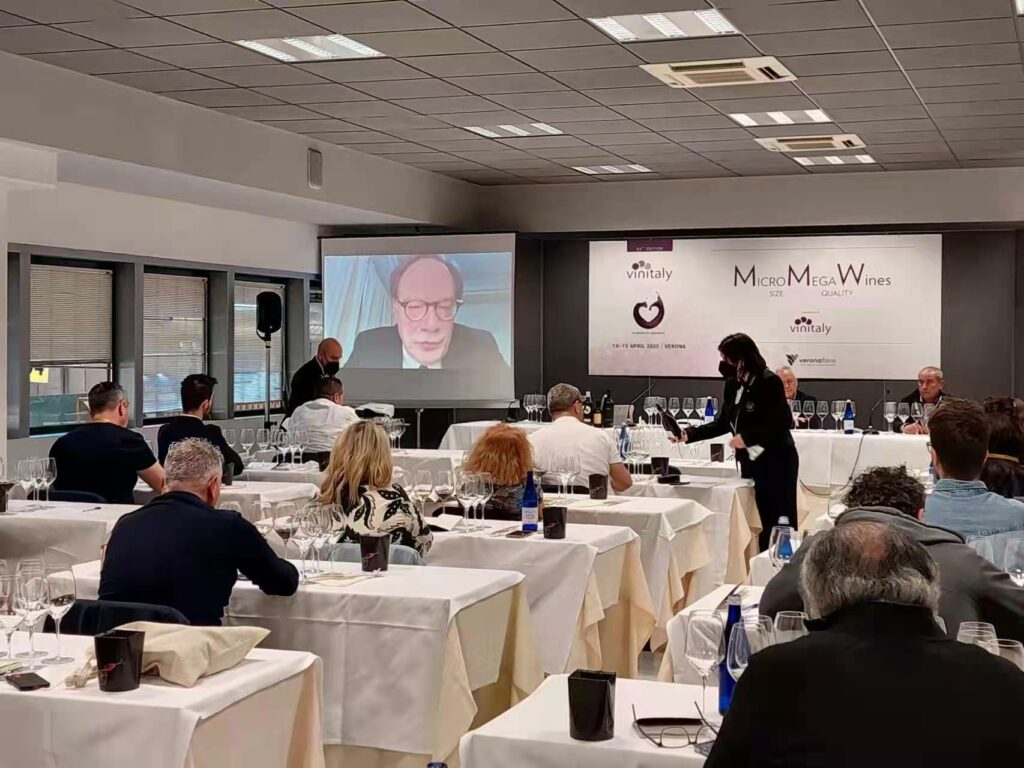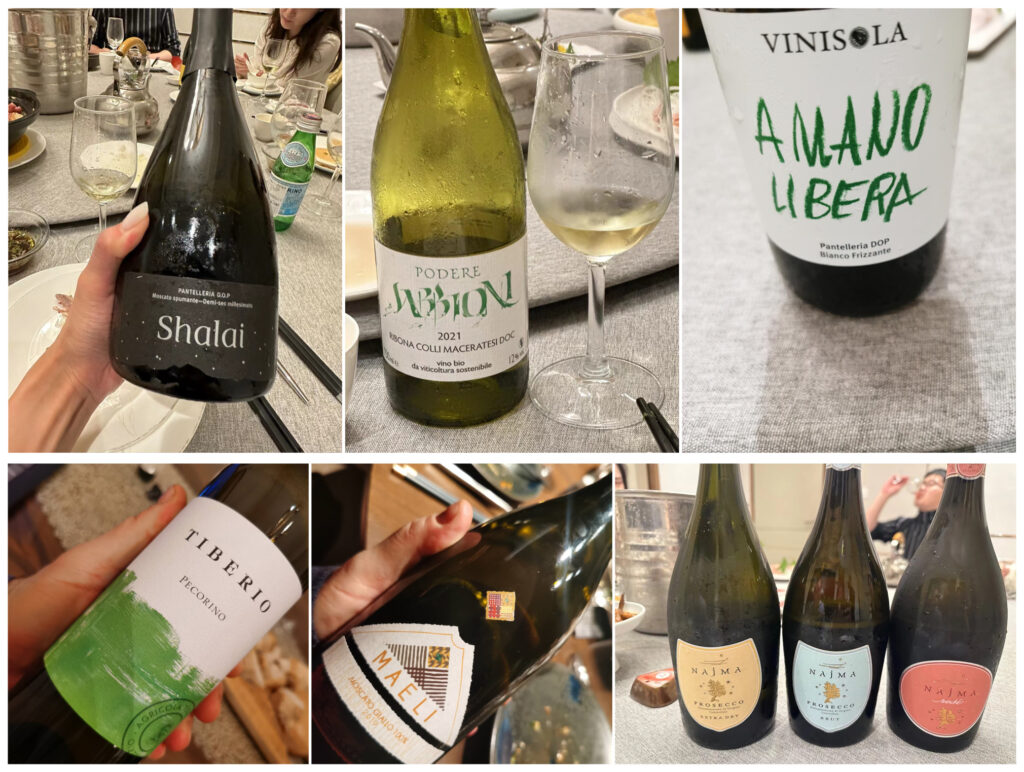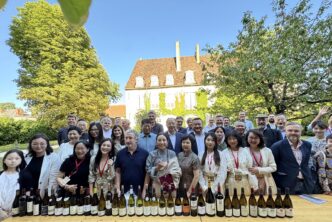I am extremely proud of the wine writing I have done over the years, first at Italian wine magazines like Porthos, then Gambero Rosso and Cucina e Vini, and finally internationally for Wine International, then as an editor at Stephen Tanzer’s International Wine Cellar, followed up by becoming Contributing Editor at Decanter, then Senior Editor at Vinous and finally the Editor-in-Chief of the TerroirSense Wine Review that you are reading now. But another aspect I am very fond and proud of is the high-level and in-depth educational courses and events and wine schools I have set up and directed over the years such as the TerroirSense Wine Academy I now run in Shanghai, the only wine school I am affiliated with (and while I am extremely proud and honoured to work with Vinitaly as this article will demonstrate, I have nothing to do, and want nothing to do, with the Vinitaly International Academy). And as I believe in teamwork, just as important to me are the collaboratons I have set up over the years and the faith and trust people put in me and want me on their governing boards, such as at the prestigious China Wine Summit organized annually in Shanghai or the upcoming Great 100 Italian Terroir Wineries wine show held in Shanghai this July that I will be telling you more about in an upcoming article. The latter is an amazing wine show featuring Italy’s best wiene states to which the likes of Biondi-Santi, Tedeschi, Donnafugata and many more have already joined. And I am currently working on another similar show that will feature the wines of another prestigious and famous wine country: more about that soon.

One other wine event I have helped create is Micro Mega Wines. David and Goliath, remember them? Or Ulysses and Poliphemus? The little and/or bright guy that defeats the bigger, stronger giant? Well, it doesn’t always work out quite so, but that it can happen is encouraging and a source of joy. And it applies to the world of wine too, where little estates often produce wines that are just as great as those made by much more moneyed or storied wineries.
With Micro Mega Wines (MMW), a specific thematic area that I created years ago for Vinitaly at the express request of Gianni Bruno, Vinitaly Area Manager with whom I have been happily collaborating for the past five years, Veronafiera and Vinitaly wanted to give Italy’s small wineries visibility and their own private space. Micro Mega Wines, where “Micro” stands for quantity and “Mega” for quality. In a value system not unlike the famous “less is more” uttered by Mies Van der Rohe, MMW is a specific part of the Organic Hall (Pavillon F) where Italy’s smaller wine estates, that do not have the financial means to sign up for world wine tours or even take part in big fairs, have a chance to shine. Over 40 estates and four different producer associations will be showcasing their wines at this year’s Vinitaly (April 2-5) in Verona in the area within Pavillon F that is entirely devoted to the Micro mega Wines estates and where wine lovers and professionals will have a chance not just to meet the winery owners and taste the wines, but also follow daily masterclasses featuring ten different wines each time, one per estate.
MMW was set to launch in 2020, the year that the Covid scourge hit the world, and so Vinitaly, just like many other fairs and wine shows including those that we organize at TasteSpirit, such as the TasteSpirit International Terroir Renaissance Symposium, had to be postponed or put on hold, and not just for one year, as well all know. Once Covid was, to a degree, defeated and life started moving back on its regular tracks, fairs opened for business once again and thus Micro mega Wines was able to see the light of day for its first ever decision just last year. This year, 2023, will see the second edition, a much bigger one than the first with forty estates showing their wines (up from the precious year’s twenty-five) and four producer associations (up from the two of the first edition of MMW).

Small wineries making wines from mostly, but not just, rare native Italian grape varieties are the hallmark of MMW, but in fact MMW is not just that. Large wineries can also produce small-batch or small-lot wines that are world class in quality, so the participating wineries do not actually have to be small. Take for example Tenuta Pratase, one of the forty estates present at this year’s edition of MMW. It belongs to Valdo, a huge powerhouse wine estate the Proseccos of which are well-known and exported all over the world. It’s a winery that could well continue to do what it does best: and yet, it went ahead and created Tenuta Pratase, a small boutique winery that is their jewel, a place where Classic Method sparkling Prosecco wines are made in the DOCG terroir of Conegliano-Valdobbiadene with old forgotten native local grapes such as Perera and Bianchetta Trevigiana, of course along with the much more common Glera. But these other native grapes were long an important part of the historic Prosecco blend and it is a shame they have been cast aside and forgotten by most of those making Prosecco today. But thanks to Valdo (and a few other estates) and in the specific case of Valdo of their appropriately enough named vineyard, the “library”, these old varieties thrive and have a chance to shine. Make no mistake about it, it is to Valdo’s infinite credit this is so. We are proud at MMW to have Tenuta Pratase with us, for what it stands for is what we stand for too. At the same time, MMW features outstanding wines made with international grapes too, such as the Alecante Bouschet wines of the Maremma made by Poggio Verrano and the Cabernet Franc wines of the Tuscan coast, or the Primitivo-Cabernet Sauvignon-Merlot blend that is the fingerprint of the little known Moro di Matera, a typical wine of the Basilicata plain near the gorgeous town of Matera (a UNESCO World Heritage site) on the border with Puglia (hence, no surprise there is Primitivo included in the blend, for it only makes sense to do so).
And so, on the one hand small volume wineries that make wines in small numbers as a way of life, but on the other large-volume wineries that have enough passion to test themselves with small niche productions as well, making great wines from both native and international grapes. MMW offers passionate wine lovers and professionals a voyage of discovery of both native and international grape varieties and the territories in which they express themselves in absolutely unique fashion. Primitivo, Aglianico, the authentic Trebbiano Abruzzese, Pecorino, Sauvignon Blanc, Erbaluce, Nebbiolo, Pinot Noir, Cannonau, Granatza, Albarossa, Barbera, Viognier, Freisa, Nerello Mascalese, Nerello Cappuccio, Maceratino, Dorona, Moscato Giallo, Tazzelenghe, Cabernet Franc, Alicante Bouschet, Sangiovese, Nascetta, Glera and many more grapes are the heroes of the wines you will taste and hopefully enjoy at MMW. But not just native grapes for the sake of native grapes: there is an amazing body of work and research behind each of the wines made at these little but world-class estates: for example, the different cru areas expressed in the Aglianico del Vulture wines of the Grifalco estate in Basilicata, not just one of the two or three best producers of this wine but also the first to have highlighted the differences in the terroirs of different communes (for example, Maschito and Ginestra) of the denomination with their different wines. Or the exceptional work being done by Francesco Rizzo and his associates of the Vinisola estate making four different versions of Pantelleria wine from the Zibibbo (Muscat of Alexandria) grape variety. Similar to the outstanding work and wines of Podere Sabbioni, that highlights all that maceration can be (a wonderful white grape that gives age-worthy wines that are slightly bigger-bodied than Verdicchio’s, also a white grape of the Marche region). Not to forget the incredible research being done at Tiberio in Abruzzo on old biotypes of Pecoprino (see TerroirSense Wine Review, February 15, 2023: Tiberio’s amazing Pecorino wine and the grape variety’s little-known biotypes). And do you like Viognier? Colle Manora in Piedmont makes a great one, as are great too its Pinot Noir and Sauvignon Blanc wines, which along with the winery’s wonderfully delicious Albarossa and Barbera wines showcase just how wide the enological possibilities are in the beautiful and still fairly wild Monferrato area of Piedmont. And Sangiovese from orcia (Tenuta sanoner) could to be anymore different from that of Chianti Classico (Il Palagio di Panzano). And do you like Ribolla Gialla as much as I do? Well, there are fewer better producers of its wines than Primosic who this year will also be at the MMW stand: one of the first to make orange wines, and in fact the first ever estate to make a Collio DOC wine (bottle number 1 with this designation is of this estate, a real feather in their cap they are understandably proud of) but at Primosic they make Ribolla Gialla wines in all shapes and sizes and theirs have to be considered benchmarks for the variety.

At the same time, MMW is also all about the amazing diversity of their expressions based on the territories they come from. For example, Primitivo expressed by three estates Micro Mega Wines speaks to us of the cooler, higher-altitude terroir of Gioia del Colle (Tenuta Pietraventosa), of the Puglian plain closer to the sea (Commenda Magistrale), and of the Basilicata terroir of Matera, close to the Puglian border (Parco dei Monaci). Or the way Cannonau and Grantaza tell us of Sardinia’s beautiful Mamojada area. MMW is a growing, successful new wine show that I am honoured to have created for Vinitaly. It is but one of many wine shows I have organized over the years and that I am proud of. Look forward to seeing you there: I’ll be at the pavillon the whole time when not guiding masterclasses elsewhere so come by and say hi, and I’ll be glad to take you around to meet the producers. And besides, I always love to meet fellow wine lovers.
A happy Vinitaly and MicroMegaWines to all!
Ian D’Agata

 English
English



